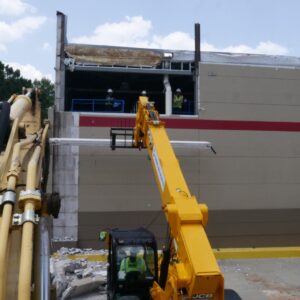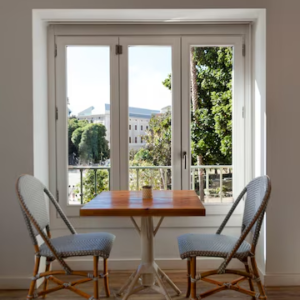When the natural landscape of your backyard isn’t quite cutting it, you can create a wall of dreams with one simple addition. Do you want to add a level of sophistication and beauty to your outdoor space? A retaining wall is the ideal project to make this happen.
It’s a great way to upgrade your outdoor design, protect erosion and slope stabilization, or just give your backyard some extra flair. But first, you’ll need to build it the right way—and that starts with knowing how retaining walls work.
Building a wall is no small feat, so let us take you through step-by-step. In this guide, we’ll help you understand the basics of retaining wall installation and find out what materials and products you need for the job. Working smarter—not harder—start here and make sure your perfect outdoor oasis meets all regulations and remains sturdy for years to come.
Understanding Retaining Walls: Function and Materials
Are you thinking of building a retaining wall? It’s a great way to boost your home’s curb appeal while providing extra stability. But before you start construction, there are a few things to know.
First and foremost, it’s important to understand what a retaining wall is and what it does. Retaining walls are typically constructed of stones, blocks, or concrete and serve two main purposes — to keep soil from eroding away and to stop water from running off into undesired areas. When properly installed, they will hold back any soil or dirt so you won’t need to worry about it slipping away.
In addition, today’s retaining walls come in a variety of materials. Natural stone is popular due to its beauty, strength and durability but may be costlier than other options like wood or concrete blocks. The choice really depends on your budget and the look you’re trying to achieve. Whichever material you use though, be sure that the wall meets building codes for your area and is built by a professional who understands proper installation techniques for the material chosen. Learn more about Retaining wall installation here.
Designing the Layout: Slope, Length, and Height
If you’re planning to build a retaining wall, you need to plan the layout first. The slope, length and height of your wall will determine the materials and tools you need for an effective installation.
The slope should be gentle: Anything steeper than 1 foot in 12 feet is tricky to work with and too steep for most walls. The length should be short enough that you can manage it: Most walls require special considerations if they exceed 25-30 feet long, like a stepped design or extra reinforcements. And the height should be carefully considered: Your local building code might have restrictions, but generally your wall should not exceed four feet in height without special considerations and safety measures.
Once you’ve got the measurements down, it’s time to figure out the construction materials and techniques you’ll use. This will depend on your budget, site conditions, landscaping goals, local building codes and more—but after doing your due diligence, you’re ready to start installing your very own wall of dreams.
Selecting Materials: Blocks, Stones and More
If you’re looking to build a wall that will stand the test of time, selecting the right materials is key. Here are a few of the most popular materials to choose from when selecting blocks or stones for your retaining wall:
Concrete Blocks
Concrete blocks come in a variety of shapes and sizes and offer some of the strongest support for any type of retaining wall. They also last longer than other options, making them an ideal choice for more permanent walls.
Natural Stones
Nothing says beauty like natural stone walls! Natural stones can provide a rustic and inviting look to any outdoor area. While they may require more installation time, they provide great esthetic value and add to the value of your home.
Interlocking Blocks
Interlocking blocks are among the easiest blocks to install and provide great stability when it comes to retaining walls with slight slopes or terraces. They are available in various sizes, shapes, and textures and can be used to create chic designs that add personality and charm to your landscape.
Construction Tips and Tricks for DIYers
If you’re a DIYer who wants to build their own retaining wall, here are some tips and tricks to make sure that your project runs smoothly.
Start with the measurements
In order to accurately calculate the amount of materials you need for your wall, you have to start with accurate measurements. Measure the length, width, and height for the area that you plan to build the wall in. Also include any slopes or curves in these measurements, as this will influence how many materials you need.
Make sure your soil is secure
Before you start building the wall, it’s important to make sure your soil is secure. You can do this by creating a bed of gravel that is 4-6 inches thick beneath your wall. This will help provide support for the weight of the wall and prevent any shifting or settling due to erosion or water runoff.
Choose high-quality materials
When it comes to building a retaining wall, quality matters! Using high-quality materials will ensure that your wall lasts longer and looks better. If possible, try to use material that matches your home’s existing exterior walls; this will give your retaining wall a more cohesive appearance. Be sure to also pick good sealant and waterproofing products so that your wall is well-protected from rain and cold weather conditions.
Special Considerations for Professional Installers
When it comes to retaining walls, you can either opt to do it yourself or hire a professional installer. Professional installers have a few important considerations that they need to keep in mind when installing a wall, some of which include:
Site Conditions
A professional should always be aware of the site conditions and make sure they are suitable for wall installation. The soil type and slope should be taken into account, as well as the presence of any underground utilities. Taking these factors into consideration can help ensure that your installation goes as smoothly as possible.
Local Building Codes
It is also important for professional installers to look into any local building codes that may affect their work. This includes making sure that you get the necessary permits and approvals before you begin working on your project. Keep in mind that different areas may have different regulations, so make sure you familiarize yourself with them before starting the project.
Proper Materials
It’s essential for installers to use quality materials for their projects. The products used should not only meet local regulations and building codes, but also be durable enough to stand up to the elements over time. Professional installers should always do their research when selecting materials and discuss options with their clients beforehand.
By taking site conditions, local building codes and materials into consideration, professional installers will have an easier time installing retaining walls for their clients — ensuring a successful project every time!
Achieving the Perfect Finish for Long-Lasting Beauty
You’ve come this far, so why not finish with a perfect finish to your wall? Achieving the perfect finish can mean the difference between a dull, lackluster wall and one that really pops—and last longer too.
Choosing the right block
The key to a perfect finish is selecting the right kind of blocks. Each type of block has different characteristics, such as its shape, size, color scheme and texture. The right block will help you create your dream wall and ensure it lasts for years to come.
Sealing your investment
Once you’ve chosen your blocks it’s time to seal them. Sealing helps protect your wall from damage due to exposure to water, dirt and other elements. The sealer also helps protect against staining and fading from things like UV light or weathering. It’s worth taking the time to properly seal your wall for long-lasting beauty.
Hiring a professional
Finally, if you’re not confident in your own DIY skills, consider hiring a professional installer. They’ll have experience in everything from properly leveling the ground to correctly placing each block in order to create an attractive retaining wall that will stand up over time. This can help ensure that everything goes smoothly and it will look great too!
Conclusion
Retaining wall installation may seem like a big undertaking, but with the right tools and expertise, it doesn’t have to be. From determining the size and type of wall you need to building the frame and backfilling, there is a lot to consider when undertaking a project like this.
Whether you’re looking to create a dream backyard oasis or protect your home from erosion, retaining walls are a great solution. With the right planning and execution, you can create an attractive, strong wall that is sure to last for many years to come. With a little guidance, the process of retaining wall installation can be a piece of cake and your dreams of an ideal outdoor space a reality.





